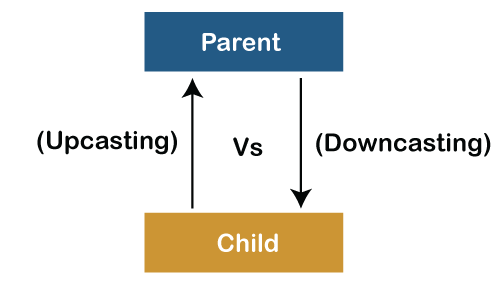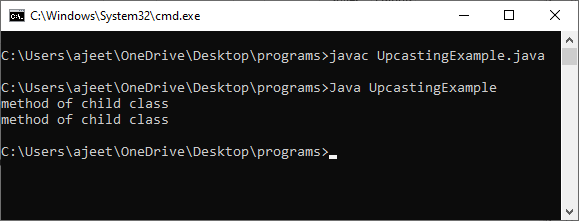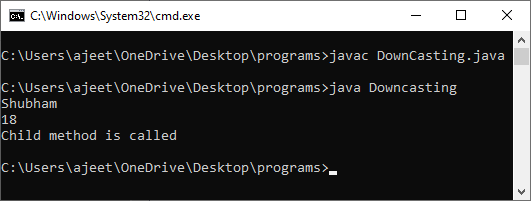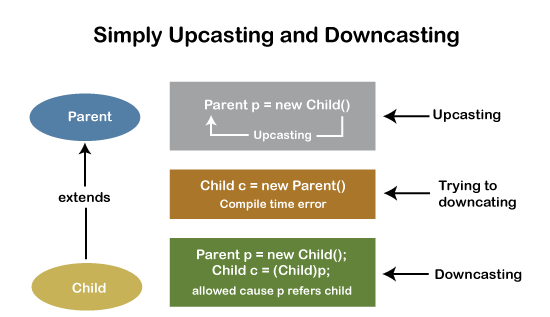Upcasting and Downcasting in JavaA process of converting one data type to another is known as Typecasting and Upcasting and Downcasting is the type of object typecasting. In Java, the object can also be typecasted like the datatypes. Parent and Child objects are two types of objects. So, there are two types of typecasting possible for an object, i.e., Parent to Child and Child to Parent or can say Upcasting and Downcasting. In Java, the object can also be typecasted like the datatypes. Parent and Child objects are two types of objects. So, there are two types of typecasting possible for an object, i.e., Parent to Child and Child to Parent or can say Upcasting and Downcasting. Typecasting is used to ensure whether variables are correctly processed by a function or not. In Upcasting and Downcasting, we typecast a child object to a parent object and a parent object to a child object simultaneously. We can perform Upcasting implicitly or explicitly, but downcasting cannot be implicitly possible. 
Let's dive into deep of both these type of object casting: 1) UpcastingUpcasting is a type of object typecasting in which a child object is typecasted to a parent class object. By using the Upcasting, we can easily access the variables and methods of the parent class to the child class. Here, we don't access all the variables and the method. We access only some specified variables and methods of the child class. Upcasting is also known as Generalization and Widening. UpcastingExample.java Output: 
2) DowncastingUpcasting is another type of object typecasting. In Upcasting, we assign a parent class reference object to the child class. In Java, we cannot assign a parent class reference object to the child class, but if we perform downcasting, we will not get any compile-time error. However, when we run it, it throws the "ClassCastException". Now the point is if downcasting is not possible in Java, then why is it allowed by the compiler? In Java, some scenarios allow us to perform downcasting. Here, the subclass object is referred by the parent class. Below is an example of downcasting in which both the valid and the invalid scenarios are explained: DowncastingExample.java Output: 
Why we need Upcasting and Downcasting?In Java, we rarely use Upcasting. We use it when we need to develop a code that deals with only the parent class. Downcasting is used when we need to develop a code that accesses behaviors of the child class. 
Difference between Upcasting and DowncastingThese are the following differences between Upcasting and Downcasting:
Next TopicWhat is Polymorphism in Java
|
 For Videos Join Our Youtube Channel: Join Now
For Videos Join Our Youtube Channel: Join Now
Feedback
- Send your Feedback to [email protected]
Help Others, Please Share










